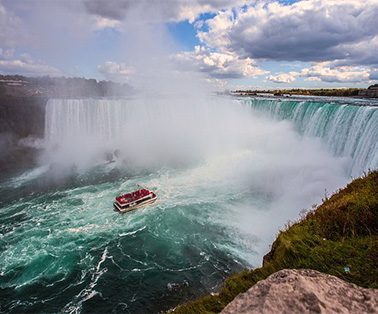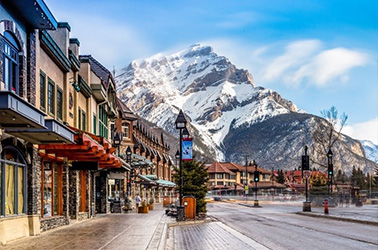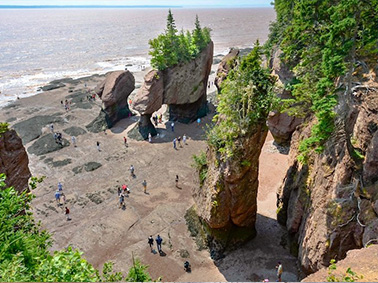© All Right Reserved 2023 by Devamic Immigration
About Canada

- Ontario
- British Columbia
- Alberta
- Nova Scotia
- New Brunswick
- Manitoba
- Prince Edward Island
- Saskatchewan
- Newfoundland and Labrador
- Quebec
Provinces of Canada

Niagara Falls

CN Tower

Banff

Bay Of Fundy
Why Canada as your Destination
Canada is a highly attractive destination for people from around the world because of its extremely developed social support system, a diverse population, and incredible natural resources. Immigration has now become undeniable and it is the reality that a globalized economy goes beyond the exchange of goods, technologies, and services across international borders. It is also anticipated that the movement of people will assist with getting access to untapped markets throughout the world. Canada, with its long history with immigration, is probably one of the most successful modern economies that is taking advantage of the potential in foreign human capital. Aided by a reputation for a high standard of living, cities that are recognized to be some of the best urban areas to live in the world, and an international reputation for its tolerant approach to newcomers. Canada is perceived as a destination of choice for those seeking new opportunities for themselves and their families.
Ontario
Canada’s most popular destination for newcomers, Ontario is the country’s most populous province, home more than 13,650,000 people. It is also the second-largest province in the country by land area. The province is located in central Canada.
Ontario's capital city is Toronto, whose 6 million people make it Canada’s largest and most populous city.
A bird's eye view of downtown Toronto, Ontario, Canada, including the CN Tower and Toronto Island
Toronto is also the country’s financial centre and the seat of the stock exchange. About half of the people living in Toronto were born in other countries, and the city is said to be the most multicultural city in the world. Also located in Ontario is Ottawa, the capital city of Canada, which is located in southeastern Ontario. Other important Ontario cities include London, Thunder Bay, Hamilton, Kingston, Windsor and Sudbury.
Besides being Canada’s main economic hub, Ontario is also known for its natural diversity, including vast forests, beautiful provincial parks, four of the five Great Lakes and the world-famous Niagara falls. Complementing this natural diversity is a cultural diversity that is the product of high levels of immigration combined with a society that embraces multiculturalism and tolerance. Ontario’s cities attract artists, entertainers and intellectuals from around the world. Ontario also produces a wealth of homegrown talent. With its very high foreign-born population, Toronto provides a taste of the world within in a city.
British Columbia
British Columbia, Canada’s westernmost province, is a hub of cultural diversity and economic growth.
Home to the country’s third-largest city, Vancouver, British Columbia is also one of the most diverse provinces in all of Canada. British Columbia’s economy focuses on a strong natural resources sector, with an emphasis on forestry and mining. Its natural environment, with expansive forests and a unique coastal climate, is renowned as one of the most beautiful in Canada, and indeed the world.
Alberta
Alberta, the largest of Canada’s three prairie provinces, contains a large portion of the Rocky Mountains and most tourism to the province centers around visiting the beautiful parks that surround them. The province’s two main cities, Calgary and Edmonton, are Canada’s largest outside the Toronto-Montreal-Vancouver axis, though they’re much less popular as tourist destinations. The larger city, Calgary, is generally acknowledged to contain more to see and do, though Edmonton contains a few famous attractions, as well.
Quebec
When we say Quebec City is known for their architecture, we mean it. It's the only walled city (on this continent) north of Mexico. Just like many classic European destinations, Quebec City has an important river that runs through the metropolis: the St. Lawrence River. They speak both French and English in Quebec, though keep in mind that French dominates some parts of the city. The French spoken in Quebec City and Montreal—often referred to as Québecois French—is slightly different from French spoken in France. Old Quebec is actually a UNESCO World Heritage Site.
Nova Scotia
There is no doubt that Nova Scotians are an outdoorsy bunch no matter the season! Experience the splendour of a Nova Scotia winter in a new way – take a beach walk, fat bike ride on the ocean floor, snowshoe a favourite trail with incredible snow-covered views, or try winter surfing. After a day outdoors, enjoy a meal of comfort food at a nearby restaurant paired with local craft beverages, and settle into a seaside cottage or yurt, cabin nestled in the trees, or geodesic dome with views of the stars.
New Brunswick
Adventure awaits in New Brunswick. At the incredible Bay of Fundy, witness the highest tides in the world, or go whale-watching and spot humpbacks. Dive right in at one of over 50 perfect beaches and explore culture, cuisine, and nightlife in Fredericton. Just off the coast of the Atlantic Ocean, the capital of New Brunswick is a riverfront city, where more than 120 kilometres of trails create a scenic network for outdoor exploration alongside the Wolastoq (“Beautiful River” in Maliseet) before it flows into the Bay of Fundy.
